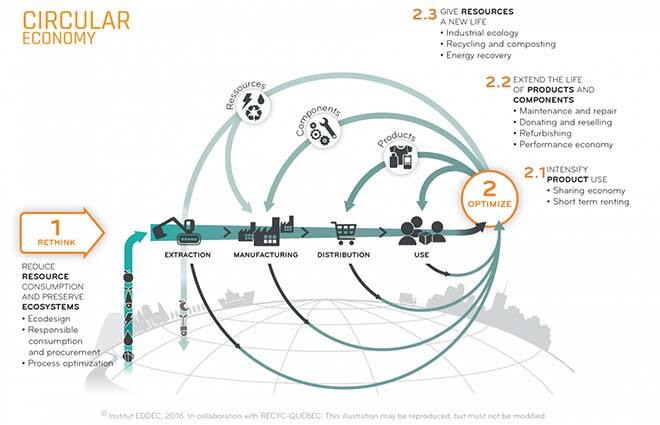Circular Manufacturing 4.0

Purchased on Istockphoto.com. Copyright.
Humanity faces dramatic challenges, as humanity is exhausting nature’s budget progressively each year. At the same time, waste is growing exponentially; consumption reduction, reusing and recycling are no longer options but vital for sustainable human activities on earth. Hence, recovery and management of end-of-life (EOL) products and pollution reduction are becoming increasingly important for industry and it opens up new business challenges and opportunities for many industries in the manufacturing supply chain.
The Circular Economy
The concept of a circular economy aims to address these issues by closing the material loop across the full supply chain towards sustainable economic and environmental development [1], and it will allow the world economy to potentially earn close to 1000 billion US dollars per year. The circular economy is not limited to only recycling of raw materials, but it encourages reuse, remanufacturing and recycling of EOL products, thereby at the same time aiming to contribute to a fair social economy and an improved quality of life for future generations. Yet, emerged already decades ago, significant barriers prevent its full adoption in the manufacturing industry.

Industry 4.0 to Foster Circularity
Major ones being lack of information on the product life cycles and shortage of technologies for circular manufacturing strategies. Further, due to their ever-shorter lifecycles and planned obsolescence, high technology products become rapidly obsolete making reuse by repair not a viable option anymore. The emerging manufacturing paradigm Industry 4.0 – key are smart factories in which flexible manufacturing entities communicate across the supply chain – seems to be an excellent solution [2]. However, research on taking advantage of Industry 4.0 technologies (e.g. Internet-of-Things (IoT)) to unlock the full potential of circular manufacturing is just starting and concrete case studies are lacking [3].
Besides intelligent approaches for disassembly, remanufacturing, and recycling, implementation of closed-loop supply chains (CLSCs) needs to be considered by manufacturers to ensure recovery of EOL products. To overcome issues regularly encountered using CLSC approaches, e.g. the large uncertainties in the product flows due to the unpredictable conditions of the EOL products, the use of intelligent IoT strategies would allow to collect data throughout complete product life cycles to define most optimal processing applied upon product recovery. An academic case study on a real-world product (modular smartphone – Fairphone-2®) was recently developed considering a novel CLSC model based on the prediction of EOL product degradation state using different levels of product IoT device implementation [4]. The proposed models’ objective is to maximize the profit of the manufacturing company using the EOL product condition knowledge as provided by the implemented IoT device (e.g. cloud service connected sensors). It could be shown that significant gains could be made by the manufacturing company when using full implementation of such IoT devices. In addition, the study presents a flowchart to support managerial decisions on optimal CLSC design policy execution, opening the possibility of such intelligent CLSC strategies for real business implementation.


